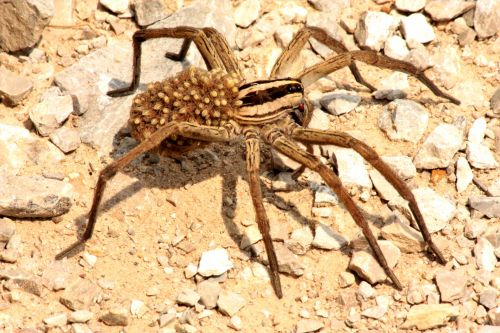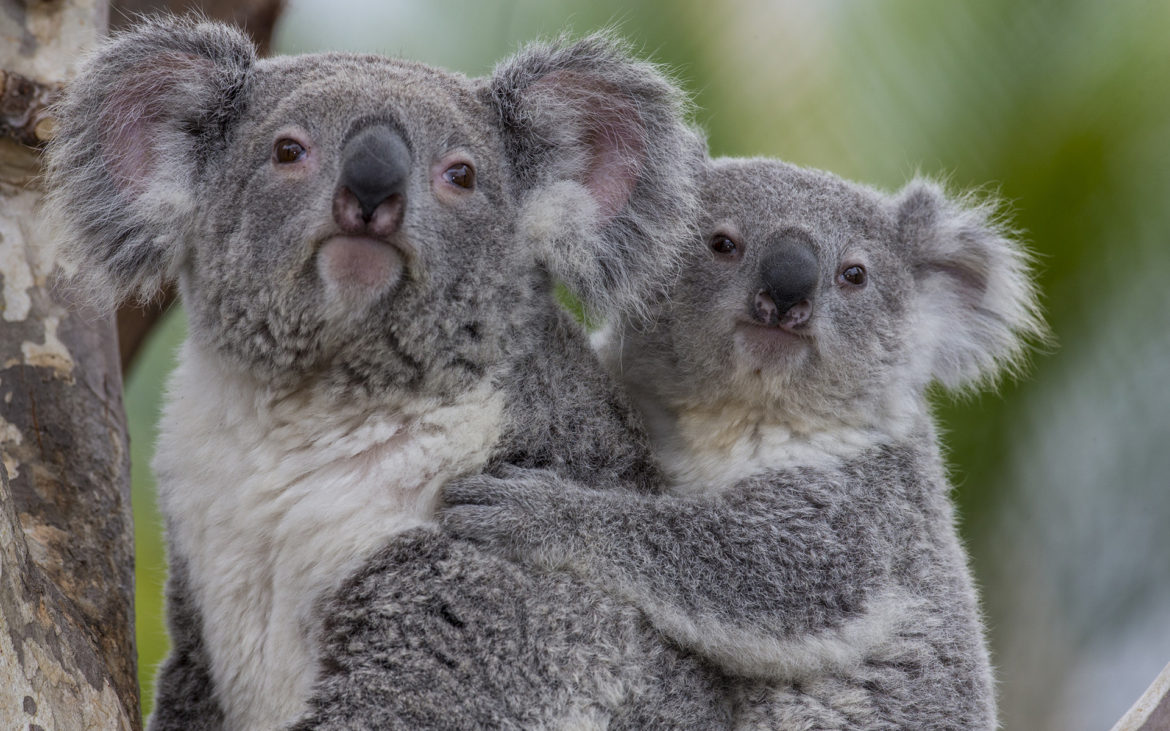ေတာရုိင္းတိရစာၦန္ေတြရဲ႕ေလာက က တိရစာၦန္ေပါက္ေလးေတြအတြက္ ၾကမ္းတမ္းျပီး ရက္စက္တယ္လို႔ ဆုိႏုိင္ပါတယ္။ ဒါေပမဲ့ အႏၱရာယ္ေတြရန္ကေန ကာကြယ္ျပဳစုပ်ိဳးေထာင္ေပးတဲ့ မိခင္ေမတၱာျပည့္ဝတဲ့ တိရစာၦန္ေလးေတြလည္းရွိပါတယ္။ လူေတြကပဲ ကုိယ့္ရဲ႕ရင္ေသြးငယ္ေတြကို ၾကင္နာယုယျပီး ဂရုစုိက္တတ္တာမဟုတ္ပါဘူး။ တိရစာၦန္ေလးေတြမွာလည္း သူတို႔ရဲ႕ရင္ေသြးငယ္ကုိ ကာကြယ္ေပးဖို႔အသိဉာဏ္ရွိၾကပါတယ္။ ဒီလက အေမမ်ားေန႔ က်ေရာက္တဲ့လျဖစ္တဲ့အတြက္ မိခင္ေမတၱာၾကီးမားတဲ့ တိရစာၦန္ေလးေတြကိုစာဖတ္သူတို႔ဖတ္ျပီး ၾကည္ႏူးေစဖို႔အတြက္ ေဖၚျပလုိက္ရပါတယ္။
Newborn baby animals are said to have a harsh life in the animal kingdom. However, there are species that their moms will protect their offspring from this disaster. Human mothers are not the only living in this world to take care of their babies with much affection, so do animal mothers. Since we have Mothers’ Day coming around, we would like to highlight some outstanding animal moms for LUSHers this month.

1. ဆင္ (Elephant)
ဆင္ေမေမေတြကေတာ့ အၾကမ္းတမ္းဆံုးမိခင္ဘဝကိုပုိင္ဆုိင္ထားရတယ္လို႔ေျပာရင္မွားမယ္မထင္ပါဘူး။ ဆင္ေတြကုိယ္ဝန္ေဆာင္တဲ့အခါ ကမာၻေပၚမွာ အၾကီးမားဆံုးရင္ေသြးကုိ သယ္ေဆာင္ထားရရုံတင္မက ၂၂ လ ထိ ကိုယ္ဝန္လြယ္ထားရတာပါ။ ဆင္ေပါက္ေလးေတြက ေမြးစမွာမ်က္စိမျမင္ရတဲ့အတြက္ သူတို႔ရဲ႕ ႏွာေမာင္းနဲ႔ ဆင္ေမေမရဲ႕အကူအညီတုိ႔ကို ယူရပါတယ္။ ဆင္ေတြက အမကဦးေဆာင္ၿပီးထိန္းေက်ာင္းတဲ့မ်ိဳးႏြယ္ျဖစ္တာေၾကာင့္ ဆင္ကေလးေမြးတဲ့အခါ အုပ္စုထဲက ဆင္မၾကီးေတြက ဝုိင္းၿပီးထိန္းေက်ာင္းေပးတတ္ၾကပါတယ္။
Mother elephant’s lives have really rough since they need to carry their babies for 22 months and they give birth the biggest baby on earth. When calves are born, they are born blind initially so they need to get help from mother elephant and rely on their trunks. Since elephants live in a matriarchal society, other female elephants all lend their hands and take care of newborn calves.

2. ကိုအာလာ (Koala)
ကိုအာလာေတြက ယူကလစ္အရြက္ေတြကို စားသံုးေလ့ရွိၾကၿပီး ယူကလစ္က အဆိပ္ျပင္းတဲ့အရြက္အမ်ိဳးအစားတစ္ခုလည္းျဖစ္ပါတယ္။ ဒီလုိစားသံုးႏုိင္တာကလည္း သူတို႔ရဲ႕အူသိမ္အူမအတြင္းမွာရွိတဲ့ bacteria ေတြက အရြက္ရဲ႕အဆိပ္ေတြကို ဖယ္ရွားေပးႏုိင္တဲ့အတြက္ေၾကာင့္ပါ။ ဒါေပမဲ့ ကုိအာလာေပါက္ေလးေတြကေတာ့ ငယ္တုန္းမွာ အဲ့အရြက္ရဲ႕အဆိပ္ေတြကို ခံႏုိင္ရည္မရွိခဲ့ပါဘူး။ ဒါေၾကာင့္ ကိုအာလာေမေမၾကီးက သူ႔ရဲ႕မစင္ကုိ ဝါးကာ ကေလးကိုေကၽြးၿပီး ကေလးငယ္ခံႏုိင္ရည္ရွိေအာင္ ေလ့က်င့္ေပးေလ့ရွိပါတယ္။ ကုိအာလာေလးေတြက ေမြးၿပီး ၆ လေလာက္ထိ ကုိအာလာေမေမရဲ႕ဝမ္းဗုိက္အိတ္ထဲမွာေနျပီး ႏုိ႔ေသာက္ကာ မျပည့္စံုေသးတဲ့ခႏၶာကုိယ္ကုိ ျပည့္စံုလာတဲ့အထိ ေနထုိင္ၾကပါတယ္။ ကုိအာလာေမေမေတြက ကေလးကုိ ေသခ်ာထိန္းေက်ာင္းတတ္ေပမဲ့ အိပ္ေရးေတာ့လံုးဝအပ်က္မခံပါဘူး။ ကုိအာလာအမေတြက တစ္ေန႔မွာ ၂၂ နာရီေလာက္ အိပ္ေလ့ရွိျပီး သူတို႔ဘဝရဲ႕ ၉၀ ရာခုိင္ႏႈန္းက တစ္ေမွး (အိပ္ျခင္း) နဲ႔ပဲ ကုန္ဆုံးတယ္လို႔ ေျပာလို႔ရပါတယ္။ Pro က်က် ကေလးထိန္းႏုိင္တယ္လို႔ပဲေျပာရမလားပါပဲ။
Koala usually eats Eucalyptus leaves which is very poisonous. The reason why they can tolerate to eat that poisonous food as their digestive track is packed with special bacteria detoxifying the poisons of the leaves. However, joeys (koala babies) cannot resist these poisons while they are young. And so, Momma koalas help them to fight against this poison by feeding their own feces to joeys. Once they are born, they spend six months inside their mothers’ pouches feeding milk and forming their missing parts during these times. No matter how they take cares of their joeys, they never lose any sleep: they spend 22 hours of shut-eye a day which is 90 percent of her life snoozing. How professionally taking care of their joeys!!!
![]()
3. မိေက်ာင္းေခါင္းတုိ (Alligator)
မိေက်ာင္းေခါင္းတိုေတြက ဥဥတဲ့အခါ သူတို႔ ဥရဲ႕အသုိက္ကုိ သဘာဝေပါက္ပင္အေဆြးအေျမ့ေတြကိုပံုျပီးျပဳလုပ္ေလ့ရွိပါတယ္။ အေၾကာင္းကေတာ့ အဲ့လုိလုပ္တာက ဥေတြကုိ အပူဓာတ္ရေရုံသာမက ဥေတြအေပၚထုိင္ၿပီး ဝပ္ေပးစရာမလုိေတာ့လို႔ပါတဲ့။ မိေက်ာင္းေခါင္းတိုေမေမတို႔က သားေပါက္ေလးေတြကုိ အႏၱရာယ္ေတြကေနကာကြယ္ဖို႔အတြက္ ပါးစပ္ထဲထည့္ထားတတ္ၾကၿပီး သူတို႔ကုိယ္ကုိ သူတို႔ကာကြယ္ႏုိင္ေအာင္၊ အမဲလုိက္ႏုိင္ေအာင္သင္ၾကားေပးကာ ဒီပညာေတြတတ္မွ ပါးစပ္ထဲကေန စိတ္ခ်လက္ခ်လႊတ္ေပးပါတယ္။ စမတ္က်က် ကေလးထိန္းႏုိင္တဲ့ မိေက်ာင္းေခါင္းတုိေတြပါပဲ။
Alligators build a nest of rotting vegetation to produce enough heat to warm the eggs instead of sitting on their eggs. After the babies are hatched, the mother carries them around and protects them in their jaws until they are able to hunt and defend themselves. How smartly Alligators can guide and care for their babies.

4. အာဖရိကက်ားသစ္ (Cheetah)
အာဖရိကက်ားသစ္အမေတြမွာ ေကၽြးေမြးေစာင့္ေရွာက္ဖို႔ သားေပါက္ေလးေတြ ၄ ေကာင္ ကေန ၆ ေကာင္ေလာက္ထိ ရွိေနတတ္ပါတယ္။ ဒါေပမဲ့ အဲ့ကေလးေတြက ေဘးအႏၱရာယ္ေတြကေန ထြက္ေျပးလြတ္ေျမာက္ႏုိင္ေအာင္ လုပ္ႏုိင္တဲ့ေမြးရာပါဗီဇ ပါမလာတဲ့အတြက္ က်ားသစ္ေမေမၾကီးက က်ားသစ္ေပါက္ေလးေတြကို အမဲလုိက္ႏုိင္ေအာင္၊ သားရဲတိရစာၦန္ေတြရဲ႕ရန္ကေန ခုခံကာကြယ္ႏုိင္ေအာင္သင္ေပးၿပီး ကုိယ့္ဘဝကုိကုိယ္ ထိန္းေက်ာင္းႏုိင္ဖို႔အတြက္ သင္ဖို႔ ၂ ႏွစ္ေလာက္ထိ အခ်ိန္ယူရပါတယ္။
Female cheetahs usually have four to six cubs to take care. However, these kids are not born with survival instincts and so they need to be trained by their moms how to hunt and fend for themselves and it takes two years to sink in and stick.

5. ေအာ္ရန္အူတန္လူဝံ (Orangutan)
ေအာ္ရန္အူတန္ေမေမၾကီး နဲ႔ သူ႔ရဲ႕သားေပါက္ေလးတို႔ရဲ႕ သံေယာဇဥ္ေႏွာင္ႀကိဳးကေတာ့ သဘာဝတရားႀကီးထဲမွာ အခုိင္မာဆံုးလို႔ေတာင္ ေျပာရင္မွားမယ္မထင္ပါဘူး။ ေအာ္ရန္အူတန္ကေလးေတြက ႏွစ္ႏွစ္သားအရြယ္ထိ လႈပ္ရွားသြားလာဖို႔ေရာ၊ အစားအေသာက္အတြက္ပါ မိခင္ကိုပဲ အားကိုးရပါတယ္။ ၆ ႏွစ္၊ ၇ ႏွစ္ အရြယ္ေလာက္ထိတုိင္ေအာင္ ေအာ္ရန္အူတန္ေမေမၾကီးက ထိန္းေက်ာင္းၿပီး သူ႔ရဲ႕ကေလးေတြကုိ အစာရွာတတ္ဖို႔၊ အစာကိုနည္းလမ္းတက်စားတတ္ဖို႔၊ အိပ္ဖို႔ နဲ႔ အသုိက္ေဆာက္တတ္ဖို႔ စတဲ့အတတ္ပညာေတြကိုသင္ၾကားေပးပါတယ္။ ဒါေၾကာင့္ သူတို႔ဟာ ကမာၻေပၚက တိရစာၦန္ေတြထဲမွာ မိခင္အေပၚမွီခုိမႈအရွည္ၾကာဆံုး တိရစာၦန္လို႔ေျပာလို႔ရပါတယ္။
We can say that the strongest bond that we will find in nature is no other than the bond between an orangutan mother and her young babies. The young babies need to rely fully on their mothers for food and transportation until the age of two years. The orangutan mother stays together with them for six to seven years along teaching them how to find food and eat food and also how to build the sleeping nest themselves. That’s why they are the longest dependence of any animal on Earth.

6. ပုိလာဝက္ဝံ (Polar Bear)
ပိုလာဝက္ဝံေမေမေတြက ပံုမွန္အားျဖင့္ ပိုလာဝက္ဝံႏွစ္ေကာင္ ေမြးေလ့ရွိပါတယ္။ ကုိယ္ဝန္ေဆာင္ကာလမွာ ႏွင္းေတြကုိ ကၽြင္းတူးၿပီး ေဆာင္းခိုတဲ့သေဘာမ်ိဳး တြင္းထဲမွာ ေနထုိင္ပါတယ္။ အစာလည္း ႏွစ္လေလာက္မစားဘဲေနၿပီး ကေလးေမြးၿပီးတဲ့အထိကုိ အိပ္ေနတတ္ပါတယ္။ ပုိလာဝက္ဝံေတြက ေမြးဖြားရအလြယ္ကူဆံုး တိရစာၦန္ေတြထဲမွာပါတယ္လို႔လည္း မွတ္တမ္းေတြမွာ ေဖၚျပထားပါတယ္။ ပိုလာဝက္ဝံေမေမေတြက သူတုိ႔ရဲ႕ ကေလးေတြကုိ ေအးလြန္းတဲ့ရာသီဥတုဒဏ္ကိုအံ့တုဖို႔နဲ႔ အသက္ရွင္ေနထုိင္ႏုိင္ဖို႔ လိုအပ္တဲ့ပညာေတြကုိ ႏွစ္ႏွစ္ဝန္းက်င္ေလာက္ သင္ၾကားျပသေပးပါတယ္။ သူတို႔က ပံုမွန္အားျဖင့္ ႏုိဝင္ဘာ နဲ႔ ဇန္နဝါရီလ ၾကားထဲမွာ ကေလးေမြးေလ့ရွိၿပီး သူတို႔ရဲ႕ခႏၶာကုိယ္အေႏြးဓာတ္ နဲ႔ ႏုိ႔ခ်ိဳတို႔ကုိ တုိက္ေကၽြးၿပီး ကေလးေတြကို ေႏြးေႏြးေထြးေထြး နဲ႔ က်န္းမာေအာင္ ေစာင့္ေရွာက္ေလ့ရွိပါတယ္။ ပိုလာဝက္ဝံေပါက္ေလးေတြက အမဲလုိက္တဲ့ပညာကုိ မသင္ခင္ မတ္လ နဲ႔ ဧၿပီလ မွာတြင္းထဲကေနထြက္ၿပီး အျပင္က အပူခ်ိန္ကုိ ေနသားက်ေအာင္ေနေလ့ရွိၾကပါတယ္။
Usually, polar bears give birth to twin cubs at the same time. During a time of pregnancy, the mother polar bears dig deep in snowdrifts and create a space to protect from elements and also they don’t eat anything and just hibernate for two full months. There is even a record saying that polar bears include in the animals of giving birth to their cubs easily. To learn the necessary survival skills in the cold climate, mother polar bears train them for about two years. The mother usually gives birth between November and January and keep their cubs warm by feeding milk to them together with their bodies’ heat. The cubs stay in their burrow before learning how to hunt and then leave it in March and April to get used to the outside temperatures.

7. Wolf Spider
Wolf Spider ကေတာ့ ပင့္ကူေတာ္ေတာ္မ်ားမ်ားနဲ႔မတူတဲ့အခ်က္ရွိပါတယ္။ ဒါကေတာ့ Wolf Spider ေတြက ကုိယ္ဝန္ေဆာင္တဲ့အခါ ဥေတြကုိ သူတို႔ရဲ႕ ပင့္ကူအိမ္မွာ ခ်ိတ္ထားတတ္ၾကပါတယ္။ Wolf Spider အမေတြက သူ႔ရဲ႕ဥေတြကုိ ေနာက္ေက်ာေပၚတင္ၿပီးသယ္သြားကာ အေကာင္ေပါက္လာရင္ေတာင္မွ အေကာင္ေပါက္ေလးေတြကုိ သူ႔ရဲ႕ေက်ာေပၚတင္ၿပီးေတာ့သယ္ေလ့ရွိပါတယ္။
There is a distinct feature of wolf spider apart from other species of spiders. While most spiders hang their eggs in their webs, female wolf spiders carry their eggs on their backs. Even after they have hatched the baby spiders, they still continue to carry them on their backs.

8. ပင္လယ္ဖ်ံ (Elephant Seal)
ပင္လယ္ဖ်ံေတြကုိယ္ဝန္ေဆာင္တဲ့အခါ ကုိယ္ဝန္ေဆာင္ကာလ ၁၁ လၾကာျမင့္ၿပီး ကုိယ္ဝန္ေဆာင္ကာလအတြင္းမွာ အရင္ကထက္ပိုၿပီး ဝိတ္တက္ေအာင္စားေသာက္ၾကပါတယ္။ ေမြးဖြားၿပီးတဲ့အခ်ိန္မွာေတာ့ သူ႔ရဲ႕ကေလးကုိ ေကၽြးေမြးေစာင့္ေရွာက္ရတာေၾကာင့္ တစ္လဝန္းက်င္အတြင္းမွာ ေပါင္ ၆၀၀ ေလာက္ထိ ျပန္က်သြားတတ္ပါတယ္။ ေဟာလိဝုဒ္က celebrity အေမတြလုိပဲ ကေလးေမြးၿပီး မၾကာေသးဘူး ပိန္ပိန္ပါးပါးေလးျပန္ျဖစ္သြားသလိုပါပဲ။
The gestation period of Elephant seal takes 11 months and they eat more than what they normally eat to gain weight. After giving birth, they lose up to 600 pounds while nursing her cubs. It’s sort of like those Hollywood celebrity moms get their normal shape after giving birth.

9. ေရဘဝဲ (Octopus)
ေရဘဝဲအမေတြက ကုိယ္ဝန္ေဆာင္တဲ့အခါ ဥေပါင္း ၅ေသာင္းေလာက္ထိကုိ တစ္ခါတည္းဝပ္ပါတယ္။ အေကာင္ေပါက္ဖို႔အတြက္ ရက္ ၄၀ ေလာက္ၾကာၿပီး အေကာင္မေပါက္ခင္ကာလအတြင္းမွာ ေရဘဝဲေမေမၾကီးက သူ႔ရဲ႕ဥေတြကုိ သားရဲတိရစာၦန္ေတြရန္ကေန ကာကြယ္ေပးၿပီး ေအာက္စီဂ်င္ရေအာင္လည္း လုပ္ေပးေလ့ရွိပါတယ္။ ေရဘဝဲေမေမႀကီးက သူကိုယ္တုိင္ အစာငတ္ေနေပမဲ့ သူ႔ရဲ႕ဥေတြဆီကေန တဖဝါးမွေတာ့မခြာပါဘူး။ အရမ္းဆာေလာင္လာတဲ့အခါ သူ႔ရဲ႕လက္ေခ်ာင္းေတြထဲက တစ္ေခ်ာင္းကုိစားၿပီး အဆာခံႏုိင္ေအာင္လုပ္ပါတယ္။
A female octopus layover 50,000 eggs at a time. It takes around 40 days for the eggs to develop before hatching and during these days, the mother octopus protects her eggs from predators and maintain to get oxygen. Rather than leaving from her eggs, the mother octopus will stay starving for herself. When she feels hungry, what’s a mom do – she eats one of the eight arms and fulfills her hunger.
မိခင္ေမတၱာျပည့္ဝတဲ့တျခားတိရစာၦန္ေလးေတြလည္း အခုေျပာျပေပးသြားတဲ့ list ထဲမွာ မပါဘဲ က်န္ဦးမွာပါ။ မိခင္ေမတၱာဆုိတာ ႏႈိင္းယွဥ္လို႔မရေလာက္ေအာင္ ၾကီးမားျပီး ငယ္စဥ္အရြယ္မွာ ယုယၾကင္နာမႈေတြေပးျပီး အခ်စ္ေတြကို သိေအာင္လုပ္ေပးခဲ့တဲ့ေက်းဇူးရွင္တစ္ဦးလုိ႔ ေျပာရင္မွားမယ္မထင္ပါဘူး။ ဒီစာေလးဖတ္ျပီး ၾကည္ႏူးမႈေလး အနည္းနဲ႔ အမ်ားေတာ့ရရွိသြားမယ္လို႔ ေမွ်ာ္လင့္ပါတယ္။
I might leave out some of the outstanding animal moms in this article. I would say mother’s love is the greatest unconditional and infinite love that we will never be replaced. So I hope you all find some happiness by reading this article.
words by MayMT
english translated by Eain Chu

